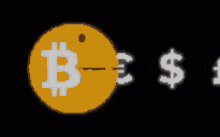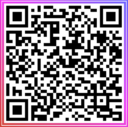Posted on January 16, 1998
USENET News – 1st Fast and Free
USENET (short for users’ network) is not actually a part of the Internet, but it uses the Internet to propagate itself. USENET News is made up of all the machines that receive network news groups, which are something like computer discussion groups or forums. People who have access to these USENET news groups can read messages, post messages, and reply to a particular poster, among other things.
There are currently over 9,000 news groups. News groups have names made up of several components, separated by periods. The different components tell you something about the topic of discussion in the group, with the left-most name component being the most general and the right-most name component being the most specific.
The most general of the name components are the so-called “top-level” names or hierarchies. These hierarchies are well established and new top-level hierarchies are created very rarely. The most commonly used hierarchies include the following:
| HIERARCHY
comp |
DESIGNATES
Computer-related topics |
Guidelines to Posting
Keep your line length under 80 characters (the maximum line length of some displays). Use mixed case, because text in all uppercase is hard to read and is generally used for emphasis in your message. A message in all uppercase is considered shouting and should be avoided. Commercial advertising is not permitted on netnews groups. Some forms of advertising do occur on the netnews groups but a blatant advertisement posted to inappropriate groups is not a good idea. Posting an e-mail message without the sender’s permission is greatly frowned on and may in fact violate copyright restrictions.
Get to know a group before posting. Read the group’s frequently-asked questions list (if any), and a few days’ worth of articles. Do some research before you ask for help; then describe what you’ve already done to solve your problem. Don’t ask for help in a group you aren’t willing to read (at least temporarily). Don’t attempt to share late-breaking news announcementsÑUsenet isn’t that fast.
Frequently Asked Questions Lists (FAQS) from Newsgroups
Many Usenet news groups maintain FAQ section, or Frequently Asked Questions listings, which attempt to collect the accumulated wisdom of the news groups. These are intended to provide handy collections of facts on particular subjects, as well as to cut down on the number of new news group readers asking the same questions that have been answered a thousand times before in the news groups. It is highly recommended that you read the FAQ for a news group (provided there is one) before posting a question. Regular news group readers (i.e. the most knowledgeable ones) get awfully tired of reading and responding to the same questions over and over again, and will often be quite rude to “newbies” whose questions could have been answered by reading the FAQ.
Aside from their value as a means of cutting back pointless question and answer sessions, FAQs are one of the most valuable sources of information available on the Internet. The material contained in FAQs typically represents what most people want to know about a specific subject, as the material is distilled from the ongoing stream of questions encountered in discussion groups.
The FAQs for Usenet news groups are typically posted monthly in their “home” discussion group, but there are also special “Answers” news groups that consist entirely of FAQs from various other news groups.
Some of these are:
| Group
alt.answers |
Category
As if anyone on alt has the answers. (Moderated) |
World Wide Web
The newest information service on the Internet at this time is the World Wide Web (WWW). The Web is a land of hypertext, color graphics, digital video, maps and lots of information. The WWW is a system of servers on the Internet tied together by hypertext links. Hypertext is a technology for linking collections of documents. With a Web browser, you will be able to look at these documents called “web pages.”
“The Web” is surely the most exciting service available, but we will limit our discussion of it here as it is very simple to use and understand, and is much better explained through experience.






 Bitcoin
Bitcoin  Ethereum
Ethereum  Tether
Tether  XRP
XRP  Solana
Solana  Dogecoin
Dogecoin  Bitcoin Cash
Bitcoin Cash  Monero
Monero  Zcash
Zcash  Litecoin
Litecoin  PAX Gold
PAX Gold